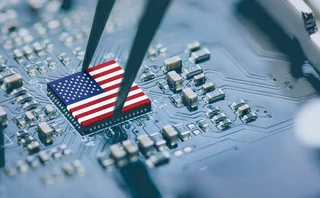Stock Market Circuit Breakers in Case of Emergency

For the time being, the Securities and Exchange Commission (SEC) has stopped short of proposing a market-wide circuit breaker to prevent a recurrence of the record drop in the Dow Jones Industrial Average (DJIA) that took place on May 6—instead opting for a stock-by-stock circuit breaker proposal—although such a market-wide plan could still appear. In cooperation with US securities exchanges and the Financial Industry Regulatory Authority (Finra), the securities industry’s self-regulatory organization, the SEC proposed a pause in trading of individual stocks if their price moves 10 percent or more in five minutes. The SEC had accepted public comment on the proposed rule from its issue on May 18 through June 3 and planned to decide on implementation of the proposal shortly after the end of the comment period.
“I believe during this time you might see additional initiatives come out of the SEC,” says Joseph Cangemi, managing director and head of global electronic trading sales at BNY ConvergEx Group. “Those could include a market-wide circuit breaker of some sort, which may also include an additional list of securities that this pilot would cover, such as exchange-traded funds (ETFs) or other types of actively traded securities in the market.”
Tech Challenge
A market-wide circuit breaker, as opposed to single-stock circuit breakers, presents greater technological challenges, according to Cangemi. “The reason the SEC has only instituted single-stock circuit breakers is that technology demands across multiple asset classes including futures, options and equity markets would have been a much too elongated process to provide some sort of short-term solution,” he says.
Finra would most likely have to led on the implementation of any potential market-wide circuit breaker, according to Lloyd Altman, senior executive in the capital markets practice and lead of the core trading services offering in North America at Accenture. “Finra has market-surveillance responsibilities, among other things,” he says. “They have systems that look at every trade and throw up the consolidated tape. They can be the catcher’s mitt, so to speak, or the filter, and say, ‘Whoa, what’s going on here?’ and force back out the circuit breakers, simultaneously. That could be one approach—leave it to the regulatory bodies to throw on the circuit breakers and dictate how they should be implemented and when.”
Circuit breakers, if instituted, have to be thoroughly tested, explains Altman. “You need to make sure you are speaking with the exchanges themselves, as well as testing with them to make sure they have met the boundary conditions,” he says. “In a situation where you are tripping over from one state to another, and a circuit breaker is about to be thrown—then it’s thrown and there are live orders on the market—how do they behave? To do that properly, there has to be synchronized testing of all market participants and that has to be done in a very orderly way.”
Markets and regulators must also address the effects of throwing a circuit breaker, according to Altman. “If there are still live orders out there, what happens during that period [after the circuit breaker is thrown but before it stops trading]?” he says. “Do they go through or are they called back because of the time stamp from where they are actually sent? I’m not going to dictate how that should be implemented but there should be clear guidelines in what you do with orders that are mid-flight. They are on the way in and are about to be executed but shouldn’t be because the circuit breaker should have caught them—that’s where the technology and the logic around the technology needs to be adequate to support the intent of the circuit breaker.”
Single-stock circuit breakers are, however, “like a trading pause, but with the same regulatory oversight and restrictions as a regulatory halt,” says Cangemi. While circuit breakers can be sensitive to news about a company, they shouldn’t be triggered by any regulatory body in response to a release of information, he adds.
Pause
The trading pause is likely to be five minutes if a circuit breaker is used, followed by an opening quote or trade from the listing exchange that could last for five minutes, meaning the total time before re-opening trading of the stock could be 10 minutes. “Hopefully, that would be on the listing exchange, but if for some other reason the listing exchange would not be able to open that security, all other exchanges and asset classes would be free to trade that same security on a 10-minute, 1-second window,” says Cangemi.
New trade messaging structures will emerge to handle the pause for the circuit breaker action under the proposed rule, he adds. “It’s a matter of all the alternative trading systems (ATSes), exchanges and options facilitators building into their technology platform the ability to read the new sets of message structures that will be created around this pause, compared with the regulatory trading wall messages that were used or are still used historically,” says Cangemi.
The notification technology being used by the exchanges and venues in tandem with circuit breakers will have to change, according to Jeff Wecker, CEO of Lime Brokerage. “The initial trigger that causes the suspension of trading really rests in the realm of the market centers, the market destination,” he says. “If the market is suspended, we would ideally like a message from that market center for a given name that the market has been suspended so we can properly use that information in informing our customers.”
Market participants are not changing their business models as a result of the circuit breaker rule proposal, according to Cangemi. “They are relying on the same systems and infrastructure and would be smart to rely on [the same systems and infrastructure] until all these reporting changes have taken place,” he says. “For example, there are many broker-dealers that are dependent on ConvergEx technologies and the infrastructure team here, and they will remain dependent on us for the period of time that this change takes place. In the industry as well, the third-party vendors that are out there now are looking at the systems that they monitor to do the very same thing. There will only be a few people who will take on a new third-party vendor or broker-dealer at this moment to take on this additional task.”
SEC Proposal
The SEC issued its rule proposal following its discussions with the exchanges and Finra in the days after the May 6 market drop, which included declines of at least 10 percent in about 30 S&P 500 index stocks in a five-minute period. The SEC believes that the market disruption was aggravated by disparate trading rules and conventions across the different exchanges, according to Mary Schapiro, chair of the SEC.
The regulator’s proposed five-minute pause in trading would provide markets with an opportunity to attract new trading interest in an affected stock, establish a reasonable market price, and resume trading in fair and orderly fashion. The new rules in the proposal would come into effect on a pilot basis on December 10 this year.
The comment period allowed markets to adjust parameters and operations of the circuit breaker as needed, and to expand its scope to securities beyond the S&P 500. “I believe that circuit breakers for individual securities across the exchanges would help to limit significant volatility,” says Schapiro. “They would also increase market transparency, bolster investor protection, and bring uniformity to decisions regarding trading halts in individual securities.”
Market observers and participants were skeptical of how effective the single-stock circuit breaker rule would be, for a range of reasons. Vlad Khandros, corporate strategist at Liquidnet, calls the proposed rule the “least worst solution. The SEC was under a lot of pressure and could have done much worse, much sooner,” he adds.
The circuit-breaker proposal could affect block trading, according to Laurie Berke, senior consultant at the Tabb Group. The rule will not, however, really affect short selling, according to Henri Waelbroeck, director of research at Pipeline Trading Systems. “When there is a big market send-off, how do we get liquidity,” he says. “That doesn’t prevent anyone from going short.”
Short sellers are being blamed for the May 6 events that sparked the SEC proposal, according to Tim Mahoney, CEO of Bids Trading. “People always have to blame somebody, to say that the short sellers caused all the problems,” he says. “In fact, short selling is a solution that is part of market structure and price discovery. To the extent that the industry wants to assimilate single-stock price movements and the ability to short, that’s OK.”
Unintended Consequences
The rule could also have unintended consequences, according to Kevin Foley, CEO of Aqua Equities. “We will probably end up with long sellers in the future who behave a lot like short sellers of the past,” he says. “Being less long will allow them to be short.”
The NYSE, for its part, is advocating an overall market circuit breaker, saying that its circuit breakers already in place on May 6 prevented a greater market plunge. Currently, the NYSE’s circuit breaker halts all US equity markets if those stocks comprising the Dow Jones Industrial Average decline by 10, 20 or 30 percent, under an agreement by these markets to honor and follow the NYSE’s action.
But the software development needed to support circuit breakers could vary widely among firms and venues. “One idea is creating what looks like a new mini-open for the stock, which would entail a different set of messages that need to be processed by the software,” says Wecker of Lime Brokerage.
Only users who have a paid subscription or are part of a corporate subscription are able to print or copy content.
To access these options, along with all other subscription benefits, please contact info@waterstechnology.com or view our subscription options here: http://subscriptions.waterstechnology.com/subscribe
You are currently unable to print this content. Please contact info@waterstechnology.com to find out more.
You are currently unable to copy this content. Please contact info@waterstechnology.com to find out more.
Copyright Infopro Digital Limited. All rights reserved.
As outlined in our terms and conditions, https://www.infopro-digital.com/terms-and-conditions/subscriptions/ (point 2.4), printing is limited to a single copy.
If you would like to purchase additional rights please email info@waterstechnology.com
Copyright Infopro Digital Limited. All rights reserved.
You may share this content using our article tools. As outlined in our terms and conditions, https://www.infopro-digital.com/terms-and-conditions/subscriptions/ (clause 2.4), an Authorised User may only make one copy of the materials for their own personal use. You must also comply with the restrictions in clause 2.5.
If you would like to purchase additional rights please email info@waterstechnology.com
More on Regulation
Off-channel messaging (and regulators) still a massive headache for banks
Waters Wrap: Anthony wonders why US regulators are waging a war using fines, while European regulators have chosen a less draconian path.
Banks fret over vendor contracts as Dora deadline looms
Thousands of vendor contracts will need repapering to comply with EU’s new digital resilience rules
Chevron’s absence leaves questions for elusive AI regulation in US
The US Supreme Court’s decision to overturn the Chevron deference presents unique considerations for potential AI rules.
Aussie asset managers struggle to meet ‘bank-like’ collateral, margin obligations
New margin and collateral requirements imposed by UMR and its regulator, Apra, are forcing buy-side firms to find tools to help.
The costly sanctions risks hiding in your supply chain
In an age of geopolitical instability and rising fines, financial firms need to dig deep into the securities they invest in and the issuing company’s network of suppliers and associates.
Industry associations say ECB cloud guidelines clash with EU’s Dora
Responses from industry participants on the European Central Bank’s guidelines are expected in the coming weeks.
Regulators recommend Figi over Cusip, Isin for reporting in FDTA proposal
Another contentious battle in the world of identifiers pits the Figi against Cusip and the Isin, with regulators including the Fed, the SEC, and the CFTC so far backing the Figi.
US Supreme Court clips SEC’s wings with recent rulings
The Supreme Court made a host of decisions at the start of July that spell trouble for regulators—including the SEC.








